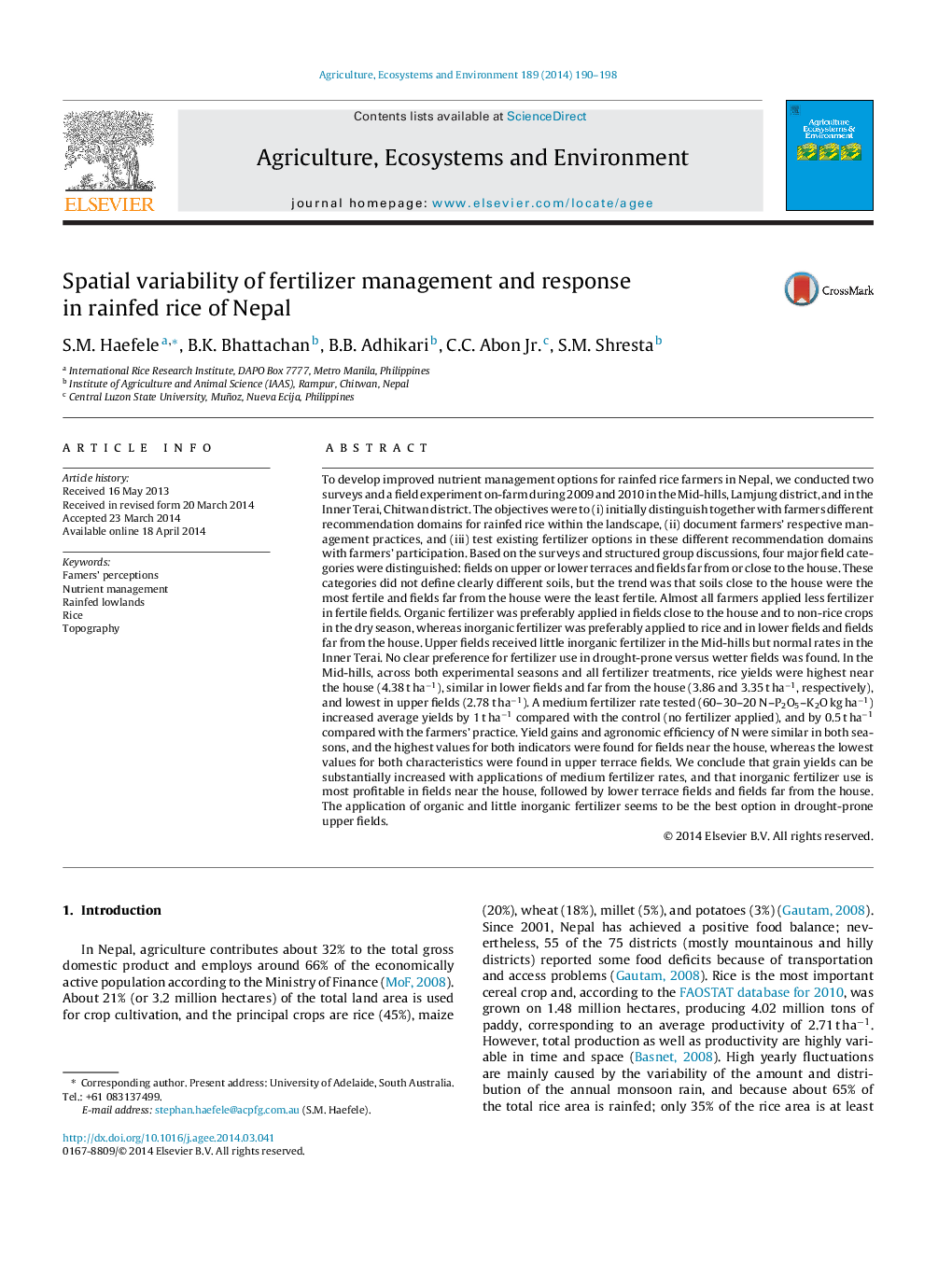| کد مقاله | کد نشریه | سال انتشار | مقاله انگلیسی | نسخه تمام متن |
|---|---|---|---|---|
| 2414053 | 1552063 | 2014 | 9 صفحه PDF | دانلود رایگان |
• We distinguished four field categories for rainfed rice in the Mid-hills of Nepal.
• Categories were fields near/far from the house, and on upper/lower terraces.
• These categories had a clear impact on crop management and grain yields.
• Yields decreased from near the house > lower and far away fields > upper fields.
• Yield gains and AEN were highest near the house and lowest in upper terraces.
To develop improved nutrient management options for rainfed rice farmers in Nepal, we conducted two surveys and a field experiment on-farm during 2009 and 2010 in the Mid-hills, Lamjung district, and in the Inner Terai, Chitwan district. The objectives were to (i) initially distinguish together with farmers different recommendation domains for rainfed rice within the landscape, (ii) document farmers’ respective management practices, and (iii) test existing fertilizer options in these different recommendation domains with farmers’ participation. Based on the surveys and structured group discussions, four major field categories were distinguished: fields on upper or lower terraces and fields far from or close to the house. These categories did not define clearly different soils, but the trend was that soils close to the house were the most fertile and fields far from the house were the least fertile. Almost all farmers applied less fertilizer in fertile fields. Organic fertilizer was preferably applied in fields close to the house and to non-rice crops in the dry season, whereas inorganic fertilizer was preferably applied to rice and in lower fields and fields far from the house. Upper fields received little inorganic fertilizer in the Mid-hills but normal rates in the Inner Terai. No clear preference for fertilizer use in drought-prone versus wetter fields was found. In the Mid-hills, across both experimental seasons and all fertilizer treatments, rice yields were highest near the house (4.38 t ha−1), similar in lower fields and far from the house (3.86 and 3.35 t ha−1, respectively), and lowest in upper fields (2.78 t ha−1). A medium fertilizer rate tested (60–30–20 N–P2O5–K2O kg ha−1) increased average yields by 1 t ha−1 compared with the control (no fertilizer applied), and by 0.5 t ha−1 compared with the farmers’ practice. Yield gains and agronomic efficiency of N were similar in both seasons, and the highest values for both indicators were found for fields near the house, whereas the lowest values for both characteristics were found in upper terrace fields. We conclude that grain yields can be substantially increased with applications of medium fertilizer rates, and that inorganic fertilizer use is most profitable in fields near the house, followed by lower terrace fields and fields far from the house. The application of organic and little inorganic fertilizer seems to be the best option in drought-prone upper fields.
Journal: Agriculture, Ecosystems & Environment - Volume 189, 1 May 2014, Pages 190–198
